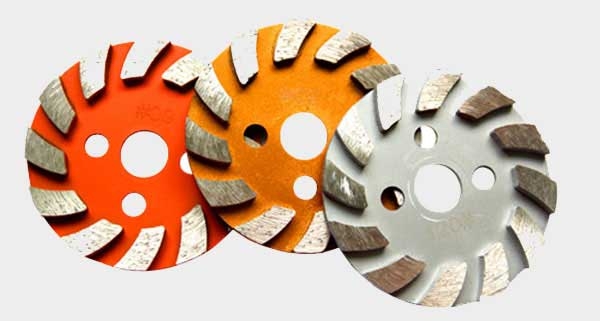Many of the peers who do stone care, when choosing the initial grinding sheet, are often selected according to the height of the ground cut. When we conduct on-site inspection, we find that the height of the panel is mostly above 3MM. The 30-mesh grinding disc will be selected for the trimming and smoothing treatment. If the height between the stone plates is below 3mm, then we generally choose 50 mesh for processing.
But is this really reasonable and correct? From the perspective of professional specifications, we choose the starting grinding sheet. The high and low cutting between the stone plates is an important basis for our choice, but it is not the only basis. We also need to refer to the physical properties of the stone to determine. The physical and chemical properties of stone include: bulk density, water absorption, Shore hardness, compressive strength, and the Shore hardness of these four items is directly related to our choice of grinding disc. The Shore hardness of stone is a special name for reflecting the hardness of stone. It is the data obtained by the authoritative organization through experimental testing. The higher the data, the higher the hardness of the stone. It is more difficult to grind directly on the grinding. The grinding needs to be more rounded. It is necessary to choose a sharper grinding piece (the smaller the grinding piece, the sharper it is). The smaller the Shore hardness data, the lower the hardness of the stone and the easier it is to grind.
After understanding the physical and chemical properties of the stone, we know that the selection of the grinding sheet should not only be based on the height of the stone, but also the hardness of the stone. The height of the floor is very large, but the hardness of the stone is very low. The original grinding piece does not need 30-mesh or 50-mesh grinding pieces. We can directly select 150 mesh or even 300 mesh. For example, when encountering white sand beige stone (its Shore hardness is 33), no matter how high or low the cut is, we can start grinding with 300 mesh. For stone like American white hemp, its height is not big, but we usually choose to start from 30 mesh because its Shore hardness is 109. After understanding these, the following is a comprehensive consideration when selecting the grinding disc according to the unevenness of the ground and the Shore hardness. This not only improves the efficiency of the work, but also reduces the material cost.
We must pay attention to a problem when choosing a cut-off grinding piece, that is, the grinding piece should be targeted and professional. What is the reason for this? In fact, grinding marble should choose marble professional grinding discs. Grinding granite series stone should choose granite professional grinding disc. Grinding and polishing brick series should choose polishing disc special grinding disc. If marble grinding is used to grind granite, we know that the cutting is flattened too slowly, the efficiency is low, and the labor cost is increased. When the granite is used to grind the marble, the speed of the smoothing of the cut will be increased, but the grinding loss will be fast and the material cost will be greatly increased. The special grinding discs of marble or granite are used to grind the polished brick floor, which may not be ground. The grinding sheet will slip, that is, it will be ground up, and the scratches of the grinding sheet will not be eliminated. Give us the subsequent process belt. Come a big problem.



